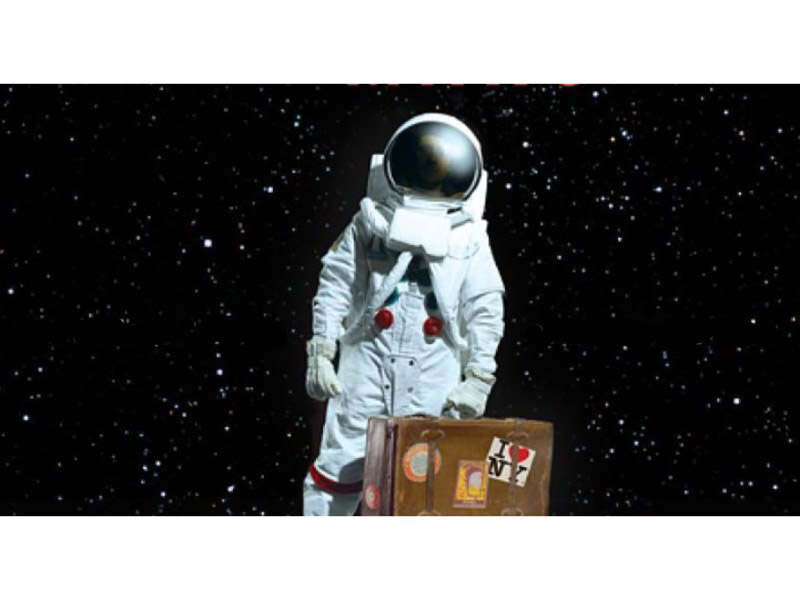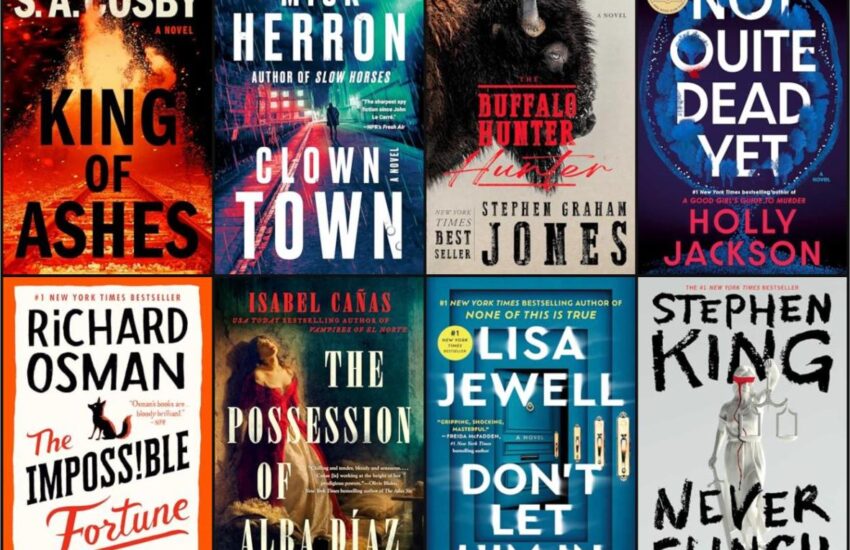The Best Books About The Universe
“What are the best books about The Universe And Space?” We looked at 75 of the top Universe books, aggregating and ranking them so we could answer that very question!
The top 9 titles, all appearing on 2 or more “Best Universe” book lists, are ranked below by how many lists they appear on. The remaining 50+ titles, as well as the lists we used are in alphabetical order at the bottom of the page.
Happy Scrolling!
Top 9 Best Books About The Universe
9 .) Big Bang: The Origin of the Universe written by Simon Singh
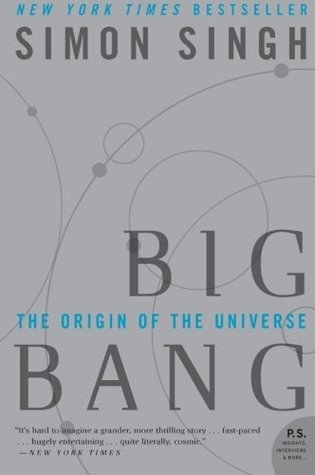
Lists It Appears On:
- Book Riot
- Goodreads
A half century ago, a shocking Washington Post headline claimed that the world began in five cataclysmic minutes rather than having existed for all time; a skeptical scientist dubbed the maverick theory the Big Bang. In this amazingly comprehensible history of the universe, Simon Singh decodes the mystery behind the Big Bang theory, lading us through the development of one of the most extraordinary, important, and awe-inspiring theories in science.
8 .) Black Holes and Time Warps: Einstein’s Outrageous Legacy written by Kip S Thorne
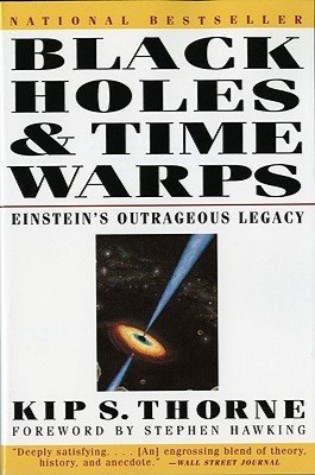
Lists It Appears On:
- Space
- The Guardian
Ever since Albert Einstein’s general theory of relativity burst upon the world in 1915 some of the most brilliant minds of our century have sought to decipher the mysteries bequeathed by that theory, a legacy so unthinkable in some respects that even Einstein himself rejected them. Which of these bizarre phenomena, if any, can really exist in our universe? Black holes, down which anything can fall but from which nothing can return; wormholes, short spacewarps connecting regions of the cosmos; singularities, where space and time are so violently warped that time ceases to exist and space becomes a kind of foam; gravitational waves, which carry symphonic accounts of collisions of black holes billions of years ago; and time machines, for traveling backward and forward in time. Kip Thorne, along with fellow theorists Stephen Hawking and Roger Penrose, a cadre of Russians, and earlier scientists such as Oppenheimer, Wheeler and Chandrasekhar, has been in the thick of the quest to secure answers. In this masterfully written and brilliantly informed work of scientific history and explanation, Dr. Thorne, the Feynman Professor of Theoretical Physics at Caltech, leads his readers through an elegant, always human, tapestry of interlocking themes, coming finally to a uniquely informed answer to the great question: what principles control our universe and why do physicists think they know the things they think they know? Stephen Hawking’s A Brief History of Time has been one of the greatest best-sellers in publishing history. Anyone who struggled with that book will find here a more slowly paced but equally mind-stretching experience, with the added fascination of a rich historical and human component.
7 .) Death by Black Hole written by Neil DeGras Tyson
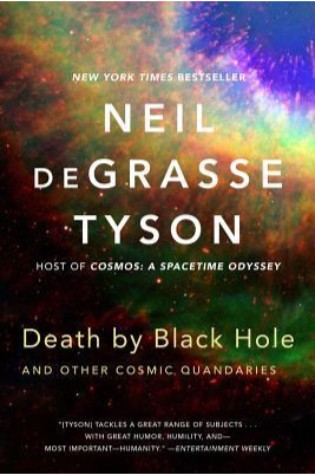
Lists It Appears On:
- Bustle
- Off The Shelf
A vibrant collection of essays on the cosmos from the nation’s best-known astrophysicist. “One of today’s best popularizers of science.” —Kirkus Reviews. Loyal readers of the monthly “Universe” essays in Natural History magazine have long recognized Neil deGrasse Tyson’s talent for guiding them through the mysteries of the cosmos with stunning clarity and almost childlike enthusiasm. Here, Tyson compiles his favorite essays across a myriad of cosmic topics. The title essay introduces readers to the physics of black holes by explaining the gory details of what would happen to your body if you fell into one. “Holy Wars” examines the needless friction between science and religion in the context of historical conflicts. “The Search for Life in the Universe” explores astral life from the frontiers of astrobiology. And “Hollywood Nights” assails the movie industry’s feeble efforts to get its night skies right. Known for his ability to blend content, accessibility, and humor, Tyson is a natural teacher who simplifies some of the most complex concepts in astrophysics while simultaneously sharing his infectious excitement about our universe.
6 .) Hyperspace written by Michio Kaku
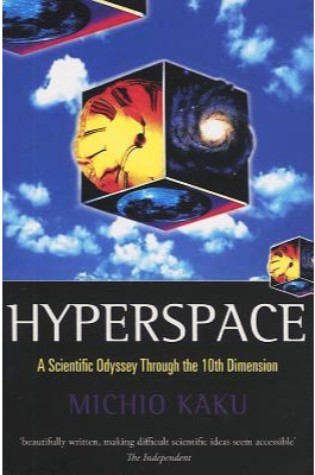
Lists It Appears On:
- Love The SAT
- Space
5 .) The Demon-Haunted World: Science as a Candle in the Dark written by Carl Sagan
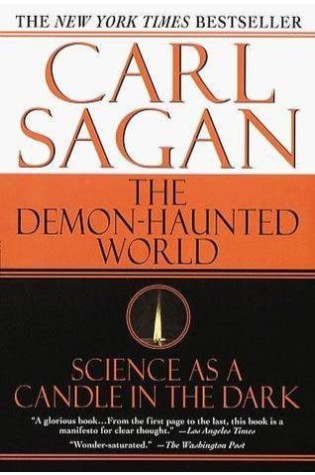
Lists It Appears On:
- Five Books
- Space
How can we make intelligent decisions about our increasingly technology-driven lives if we don’t understand the difference between the myths of pseudoscience and the testable hypotheses of science? Pulitzer Prize-winning author and distinguished astronomer Carl Sagan argues that scientific thinking is critical not only to the pursuit of truth but to the very well-being of our democratic institutions. Casting a wide net through history and culture, Sagan examines and authoritatively debunks such celebrated fallacies of the past as witchcraft, faith healing, demons, and UFOs. And yet, disturbingly, in today’s so-called information age, pseudoscience is burgeoning with stories of alien abduction, channeling past lives, and communal hallucinations commanding growing attention and respect. As Sagan demonstrates with lucid eloquence, the siren song of unreason is not just a cultural wrong turn but a dangerous plunge into darkness that threatens our most basic freedoms.
4 .) The Glass Universe written by Dava Sobel
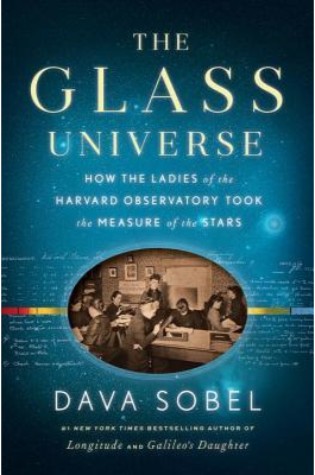
Lists It Appears On:
- Off The Shelf
- Space
Author Dava Sobel returns with the little-known true story of a group of women whose contributions to the burgeoning field of astronomy forever changed our understanding of the stars and our place in the universe In the mid-nineteenth century, the Harvard College Observatory began employing women as calculators, or “human computers,” to interpret the observations made via telescope by their male counterparts each night. At the outset this group included the wives, sisters, and daughters of the resident astronomers, but by the 1880s the female corps included graduates of the new women’s colleges—Vassar, Wellesley, and Smith. As photography transformed the practice of astronomy, the ladies turned to studying the stars captured nightly on glass photographic plates. The “glass universe” of half a million plates that Harvard amassed in this period—thanks in part to the early financial support of another woman, Mrs. Anna Draper, whose late husband pioneered the technique of stellar photography—enabled the women to make extraordinary discoveries that attracted worldwide acclaim. They helped discern what stars were made of, divided the stars into meaningful categories for further research, and found a way to measure distances across space by starlight. Their ranks included Williamina Fleming, a Scottish woman originally hired as a maid who went on to identify ten novae and more than three hundred variable stars, Annie Jump Cannon, who designed a stellar classification system that was adopted by astronomers the world over and is still in use, and Dr. Cecilia Helena Payne-Gaposchkin, who in 1956 became the first ever woman professor of astronomy at Harvard—and Harvard’s first female department chair.
3 .) Packing for Mars written by Mary Roach
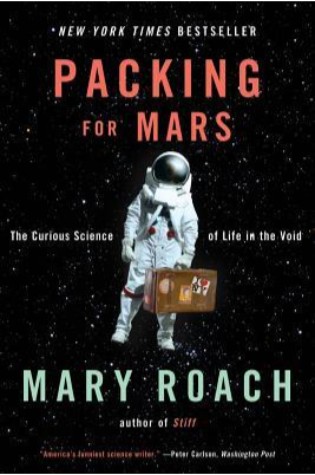
Lists It Appears On:
- Bustle
- io9
- Off The Shelf
Space is a world devoid of the things we need to live and thrive: air, gravity, hot showers, fresh produce, privacy, beer. Space exploration is in some ways an exploration of what it means to be human. How much can a person give up? How much weirdness can they take? What happens to you when you can’t walk for a year? have sex? smell flowers? What happens if you vomit in your helmet during a space walk? Is it possible for the human body to survive a bailout at 17,000 miles per hour? To answer these questions, space agencies set up all manner of quizzical and startlingly bizarre space simulations. As Mary Roach discovers, it’s possible to preview space without ever leaving Earth. From the space shuttle training toilet to a crash test of NASA’s new space capsule (cadaver filling in for astronaut), Roach takes us on a surreally entertaining trip into the science of life in space and space on Earth.
2 .) A Brief History of Time written by Stephen Hawking
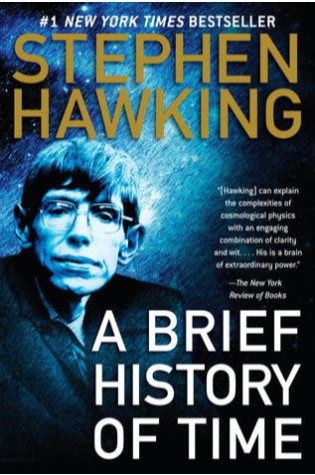
Lists It Appears On:
- Bustle
- Love The SAT
- Off The Shelf
- Space
In the ten years since its publication in 1988, Stephen Hawking’s classic work has become a landmark volume in scientific writing, with more than nine million copies in forty languages sold worldwide. That edition was on the cutting edge of what was then known about the origins and nature of the universe. But the intervening years have seen extraordinary advances in the technology of observing both the micro- and the macrocosmic worlds. These observations have confirmed many of Professor Hawking’s theoretical predictions in the first edition of his book, including the recent discoveries of the Cosmic Background Explorer satellite (COBE), which probed back in time to within 300,000 years of the universe’s beginning and revealed wrinkles in the fabric of space-time that he had projected. Eager to bring to his original text the new knowledge revealed by these observations, as well as his own recent research, Professor Hawking has prepared a new introduction to the book, written an entirely new chapter on wormholes and time travel, and updated the chapters throughout.
1 .) Cosmos written by Carl Sagan
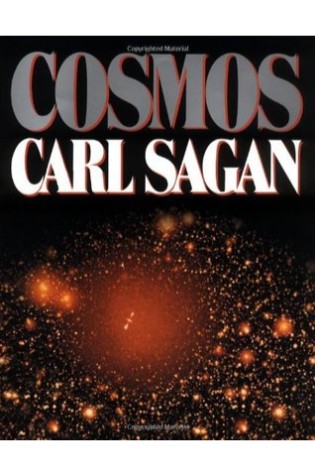
Lists It Appears On:
- Bustle
- Goodreads
- Off The Shelf
- Space
Cosmos has 13 heavily illustrated chapters, corresponding to the 13 episodes of the Cosmos television series. In the book, Sagan explores 15 billion years of cosmic evolution and the development of science and civilization. Cosmos traces the origins of knowledge and the scientific method, mixing science and philosophy, and speculates to the future of science. The book also discusses the underlying premises of science by providing biographical anecdotes about many prominent scientists throughout history, placing their contributions into the broader context of the development of modern science. The book covers a broad range of topics, comprising Sagan’s reflections on anthropological, cosmological, biological, historical, and astronomical matters from antiquity to contemporary times. Sagan reiterates his position on extraterrestrial life—that the magnitude of the universe permits the existence of thousands of alien civilizations, but no credible evidence exists to demonstrate that such life has ever visited earth.
The 50+ Additional Best Books To Learn More About The Universe And Space
| # | Books | Authors | lists |
| 10 | 100 Things to See in the Night Sky | Space | |
| 11 | A Man on the Moon | Andrew Chaikin | Five Books |
| 12 | A Short History of Nearly Everything | Bill Bryson | Love The SAT |
| 13 | A Universe from Nothing: Why There Is Something Rather Than Nothing | Goodreads | |
| 14 | America In Space: NASA’s First Fifty Years | Steven Dick, Robert Jacobs, Constance Moore, and Bertram Ulrich | io9 |
| 15 | An Astronaut’s Guide to Life on Earth | Chris Hadfield | Bustle |
| 16 | Asimov on Astronomy | Goodreads | |
| 17 | Asteroid Hunters | Space | |
| 18 | Bang! | Brian May, Patrick Moore, and Chris Lintott | Five Books |
| 19 | Beyond Einstein | Michio Kaku | Off The Shelf |
| 20 | Breaking the Time Barrier: The Race to Build the First Time Machine | Jenny Randles | io9 |
| 21 | Catching Stardust | Space | |
| 22 | Coming of Age in the Milky Way | Timothy Ferris | Book Riot |
| 23 | Contact | Carl Sagan | Love The SAT |
| 24 | Decoding the Universe | Charles Seife | The Guardian |
| 25 | Dragonfly | Bryan Burrough | The Guardian |
| 26 | Earth in Human Hands | Space | |
| 27 | Exoplanets | Space | |
| 28 | Facts From Space! | Space | |
| 29 | Galileo’s Daughter | Dava Sobel | The Guardian |
| 30 | Hidden Figures | Margot Lee Shetterly | Off The Shelf |
| 31 | How I Killed Pluto and Why It Had It Coming | Mike Brown | Five Books |
| 32 | How It Ends | Chris Impey | Bustle |
| 33 | Journey to Civilization The Science of how we got here | Goodreads | |
| 34 | Lines of Space: Source of Fundamental Forces and Constituent of All Matter in the Universe | Goodreads | |
| 35 | Lonely Hearts of the Cosmos | Dennis Overbye | The Guardian |
| 36 | Making Contact | Space | |
| 37 | Men, Monsters, and the Modern Universe | George Lovi and Wil Tirion | Book Riot |
| 38 | Miss Leavitt’s Stars | George Johnson: | Book Riot |
| 39 | NightWatch: A Practical Guide to Viewing the Universe | Space | |
| 40 | Our Mathematical Universe | Max Tegmark | Love The SAT |
| 41 | Out There | Space | |
| 42 | Physics of the Impossible | Michio Kaku | Bustle |
| 43 | Planet Hunters | Space | |
| 44 | Project Orion | George Dyson | The Guardian |
| 45 | Sapiens: A Brief History of Humankind | Yuval Noah Harari | Love The SAT |
| 46 | See It with a Small Telescope | Space | |
| 47 | Seven Brief Lessons on Physics | Carlo Rovelli | Off The Shelf |
| 48 | Sizing up the Universe: The Cosmos in Perspective | J. Richard Gott and Robert J. Vanderbei | io9 |
| 49 | Spooky Action at a Distance | Space | |
| 50 | Star Vistas: A Collection of Fine Art Astrophotography | Greg Parker and Noel Carboni | io9 |
| 51 | Sun Moon Earth | Space | |
| 52 | Superintelligence | Nick Bostrom | Love The SAT |
| 53 | The 4% Universe: Dark Matter, Dark Energy, and the Race to Discover the Rest of Reality | Richard Panek: | Book Riot |
| 54 | The Big Bang and Lines of Space | Goodreads | |
| 55 | The Big Bang Never Happened: A Startling Refutation of the Dominant Theory of the Origin of the Universe | Goodreads | |
| 56 | The Blank Slate | Steven Pinker | Love The SAT |
| 57 | The Blind Watchmaker: Why the Evidence of Evolution Reveals a Universe Without Design | Goodreads | |
| 58 | The Book Nobody Read | Owen Gingerich | The Guardian |
| 59 | The Disappearing Spoon: And Other True Tales of Madness, Love, and the History of the World from the Periodic Table of the Elements | Sam Kean | io9 |
| 60 | The Edge of Physics | Anil Ananthaswamy | The Guardian |
| 61 | The Elegant Universe: Superstrings, Hidden Dimensions, and the Quest for the Ultimate Theory | Goodreads | |
| 62 | The Fabric of the Cosmos | Brian Greene | Love The SAT |
| 63 | The Immortal Life of Henrietta Lacks | Rebecca Skloot | io9 |
| 64 | The Particle at the End of the Universe | Sean Carroll | Off The Shelf |
| 65 | The Planet Factory | Space | |
| 66 | The Six-Cornered Snowflake | Johannes Kepler | io9 |
| 67 | The Sleepwalkers | Arthur Koestler | The Guardian |
| 68 | The Very First Light | John C Mather and John Boslough | The Guardian |
| 69 | The Zoomable Universe | Space | |
| 70 | Trespassing on Einstein’s Lawn: A Father, A Daughter, the Meaning of Nothing, and the Beginning of Everything | Amanda Gefter | Book Riot |
| 71 | Welcome to the Universe | Neil deGrasse Tyson, Michael A. Strauss, and J. Richard Gott | Off The Shelf |
| 72 | Why Does E=mc2? | Brian Cox and Jeff Forshaw | Five Books |
| 73 | Wicked Plants: The Weed That Killed Lincoln’s Mother and Other Botanical Atrocities | Amy Stewart | io9 |
| 74 | Women in Space | Karen Bush Gibson | Bustle |
| 75 | You Are Here: A User’s Guide to the Universe | Goodreads |
9 Best Fiction And Nonfiction Books About The Universe And Science Book Sources/Lists
| Source | Article |
| Book Riot | Nerds in Space: My Favorite Books About Life, the Universe, and |
| Bustle | 8 Nonfiction Books About Space That Are Literally Out Of This World |
| Five Books | The Best Books on The Universe | Five Books Expert Recommendations |
| Goodreads | Books on Creation of Universe |
| io9 | 10 Amazing Science Books That Reveal The Wonders Of The Universe |
| Love The SAT | 9 Mind-Expanding Books on Science, Humanity, and the Universe |
| Off The Shelf | 10 Books on Astrophysics That Will Make You Neil deGrasse Tyson |
| Space | Best Astronomy and Astrophysics Books to Read in 2018 |
| The Guardian | Stuart Clark’s top 10 approachable astronomy books |
